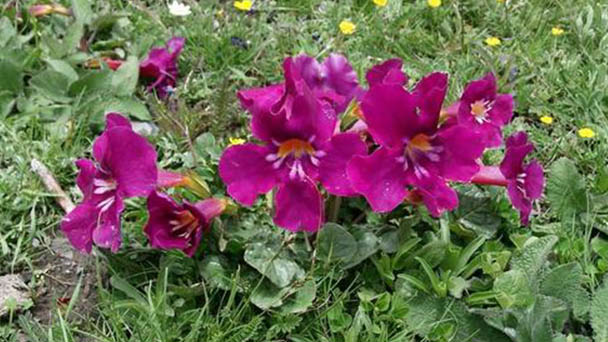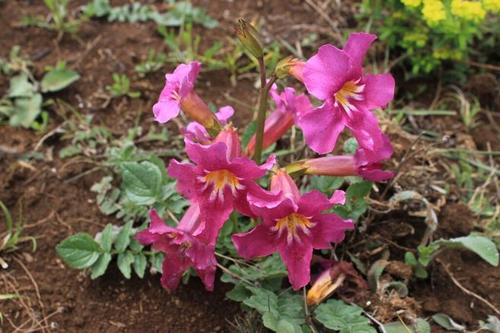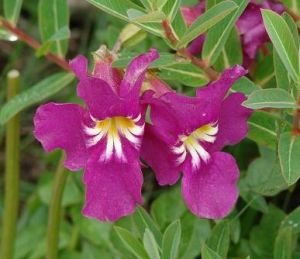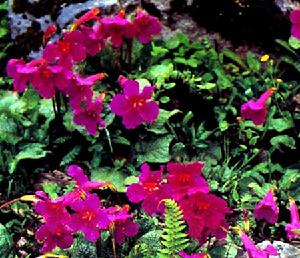Dwarf hardy gloxinia (Incarvillea mairei) profile
Written by Maggie
Mar 03 2021

Dwarf Hardy Gloxinia (Variant), scientific name Incarvillea mairei, is a perennial herb of the family Vlaveroeaceae, having no stem and a height of 30 -- 40 cm. Dwarf Hardy Gloxinia was born in alpine grassy slopes of 2500-3650 meters above sea level. Alpine flowers, corolla purplish red or pink, have good ornamental value. In addition, the roots and leaves of Dwarf Hardy Gloxinia can also be used as medicine.
Dwarf hardy gloxinia picture

Dwarf hardy gloxinia info
| Botanical Name | Incarvillea mairei |
| Common Names | Dwarf Hardy Gloxinia |
| Plant Type | Perennial |
| Mature Size | 30cm (12in) |
| Natural Range | SW China to Nepal 2400-4500 m |
| Habitat | sunny dry slopes |
| Synonyms | ncarvillea compacta, Incarvillea grandiflora, Incarvillea racemose, Tecoma mairei |
Morphological characteristics of dwarf hardy gloxinia
Leaf
The Dwarf Hardy gloxinia (Variant) leaves are basal, with 1 pinnate compound leaves. Lateral leaflets are 2-3 pairs, ovate, terminal leaflets 2-3 times larger than lateral leaflets, broadly ovoid, apically obtuse, base slightly cordate, 11 cm long and 9 cm wide, margin obtuse, lateral leaflets subsessile.
Flowers
Racemes with 2- to 4-flowered, subapical inflorescences; Scape is 22 cm long; Pedicels are 1-3 cm long; Pedicels of Dwarf hardy gloxinia are subequal to peduncles; Dwarf hardy gloxinia has 2 bracteoles, linear, ca. 1 cm.Calyx campanulate, ca. 2.5 cm long, calyx teeth triangular, apex acuminate. Corolla is purplish red or pink, 7 -- 10 cm long, 5 -- 7 cm in diameter, corolla tube 5 -- 6 cm long, lower part yellowish, corolla lobes rounded. Dwarf hardy gloxinia has 4 stamens,2 strong, anthers of each pair of stamens by amalgamated clinging style, anthers poles divergent.
Fruit
Ovary of Dwarf hardy gloxinia is 2-loculed, ovules 1-2 rows on each placenta; Dwarf hardy gloxinia has 5 styles. 5-6.5 cm long, stigma flabellate, membranous, 2-lobed. Capsule is conical, 6-8 cm long, ca. 1 cm thick, with inconspicuous ridges. Seeds are broadly ovoid, not thickening, pale brown, less logarithmic leaflets.
The Flowering stage of Dwarf Hardy Globxinia is in spring, and fruiting stage is from summer to autumn.
Ecological habits of dwarf hardy gloxinia
Dwarf Hardy Gloxinia is native to alpine grassy slopes between 2500 and 3650 m above sea level.
Distribution of dwarf hardy gloxinia
Dwarf hardy gloxinia is distributed in Yunnan (Zhongdian, Lijiang), Sichuan and Qinghai.

Chemical constituents of dwarf hardy gloxinia
Dwarf hardy gloxinia contains O-hydroxybenzoic acid, Palmitic acid, Hexacosanoic acid, β-sitosterol, β-daucosterol, Oleanolic acid, Ursolic acid, Quercetin, Vincetoxicosi-DEB), p-hydroxy benzoic acid, 3-methoxy 4-hydroxy benzoic acid, Stigmasterol.
Cultivation of dwarf hardy gloxinia:
Light: part shade to full sun
Soil: well drained
Water: average to dry
USDA Hardiness Zone: 3- 9
Dwarf hardy gloxinia propagation
Dwarf hardy gloxinia propagation methods are seed and division
Dwarf hardy gloxinia main value
Dwarf hardy gloxinia can treat little postpartum milk, long sickness, weakness, dizziness, anemia.

Latest Updated
- Benefits of Bugleweed - 7 Science-backed Health Benefits
- Bugleweed Dangers & Side Effects - Is It Poisonous?
- How to Plant Evergreen Trees - What You Should Know
- When to Plant Evergreens - Grow Guide for Evergreen Trees
- 12 Wonderful Evergreen Shrubs for Your Garden
- 12 Popular Evergreen Plants with Pictures for Beginners
- When And How To Prune A Lilac Bush Like a Pro
- How to Grow & Care for Lilac Vine (Hardenbergia Violacea)
- Japanese Lilac Tree (Syringa Reticulata) Care & Propagation Guide
- Shumard Oak Pros and Cons - What to Know
Popular Articles
- Winter maintenance of Antirrhinum Majus
- How to Grow Terminalia Mantaly Tree
- How to Grow and Care for Crossostephium Chinense
- How to grow Antirrhinum Majus in spring
- Peristeria Elata (Dove Orchid) Profile: Info & Care Guide
- Underwatered Snake Plant (Sansevieria Trifasciata) - Signs And How To Fix
- How to Care for Brazilian Jasmine Plant (Mandevilla Sanderi)
- How to Grow & Care for Graptopetalum Purple Delight in Summer
- Rosa Chinensis (China Rose): Plant Growing & Care Tips
- How to Care for Baby Sun Rose (Aptenia Cordifolia)